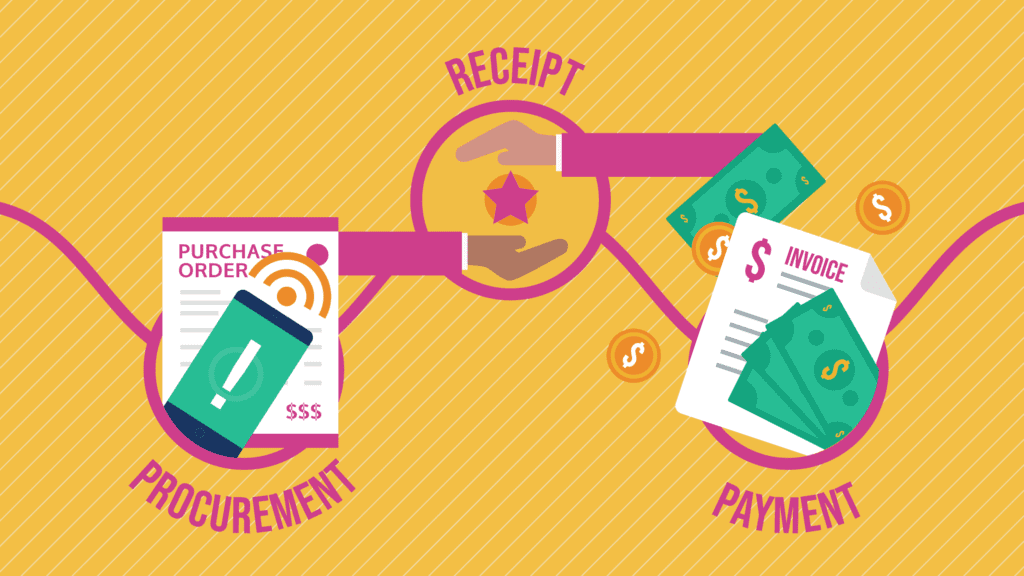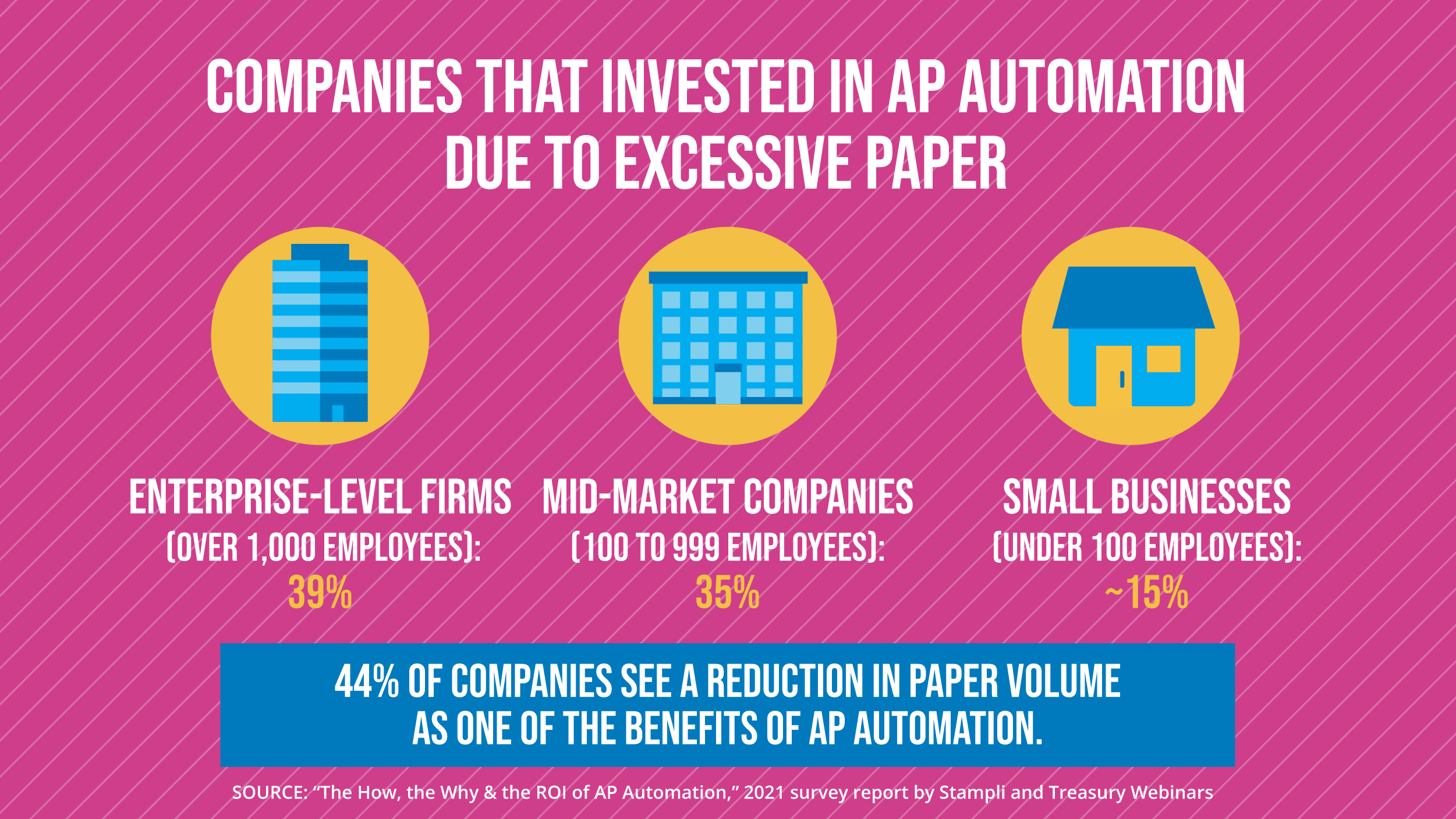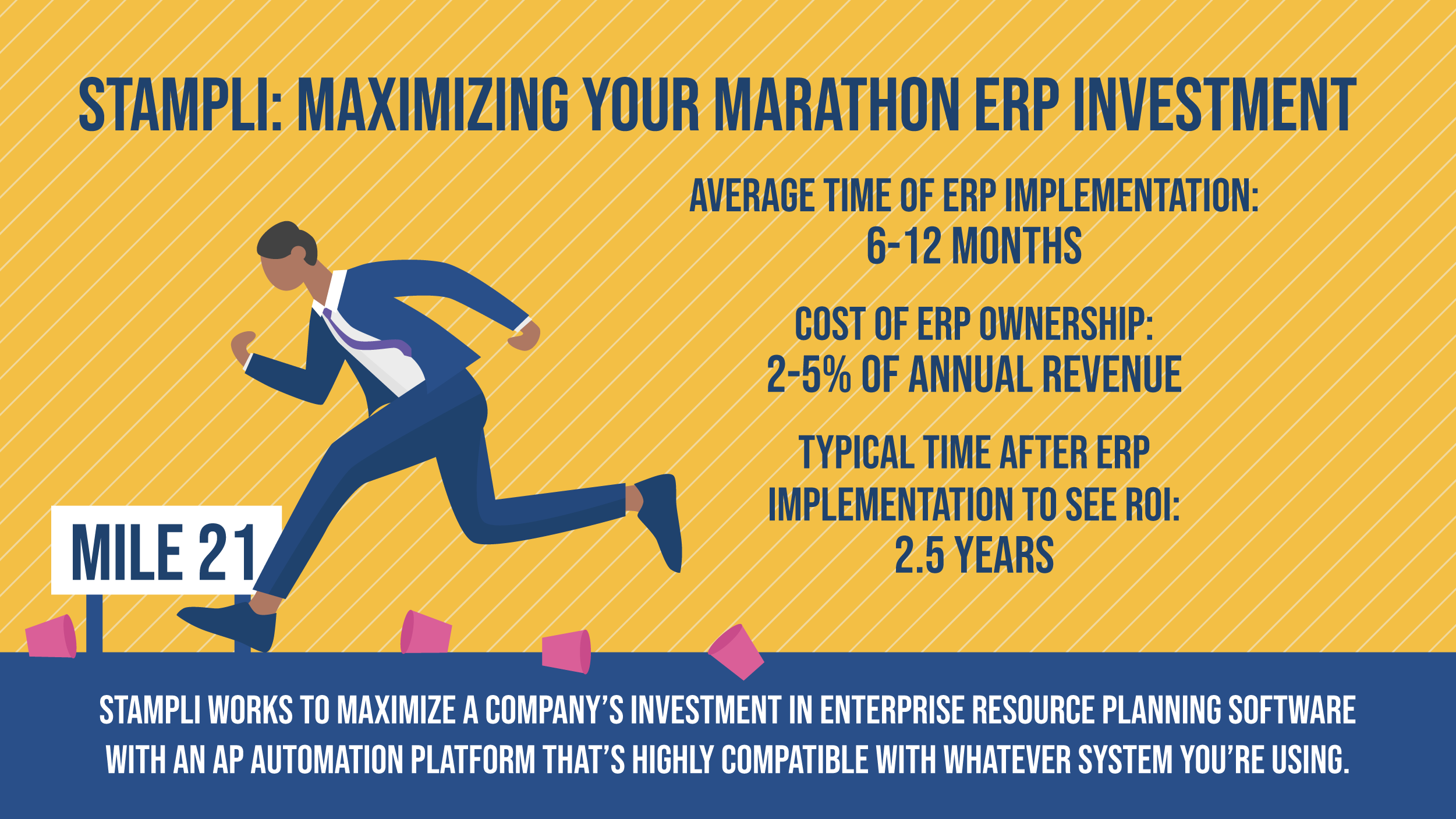Why End-to-End Accounts Payable Integration Requires AP Automation

Many companies lack end-to-end accounts payable integration, whether they know it or not.
Sure, they might have purchased a top-of-the-line enterprise resource planning system in recent years, with cloud computing making ERPs much easier for companies to implement. Perhaps a business has implemented invoice scanning with OCR, or optical character recognition software – a low-hanging AP integration for many firms. Or maybe they have an ancient in-house accounting system but skilled staff that keep it running optimally.
Whatever the reason, these companies all have one thing in common: Without AP automation, they’re still a ways away from true accounts payable integration. Join us as we explore the basics of AP integration, why it’s unwise to attempt it without AP automation, and how Stampli can help companies achieve full integration.
Accounts Payable Integration 101

First, let’s explore some of the basics of accounts payable integration and why it’s a necessity for businesses these days.
Accounts Payable Integration, Defined
Perhaps once upon a time, businesses could just get a bill in the mail, put a check in an envelope, and call it a day. In a time before computers or high-speed internet, accounts payable might have been a lot simpler work. Maybe.
These days, though, AP has evolved into a series of much more complex tasks. Accounts payable integration recognizes the complexity and helps businesses meet the demands of the vendors, suppliers, and independent contractors they work with.
In short, accounts payable integration can be defined as the technology that helps AP staff process transactions from procurement to payment and beyond. Good AP tech doesn’t just stop working when an invoice is paid. It helps ensure that reconciliations occur, documents are stored in audit-ready formats, and transactions are regularly reviewed to check for duplicates or possible fraud.
Why Accounts Payable Integration is Needed
Maybe for very small business operations that only have a handful of invoices each month — think freelancers or mom-and-pop concerns – manual AP operations will suffice. Mid-size and larger companies, however, could court disaster without accounts payable integration.
In a 2021 survey report Stampli collaborated on with Treasury Webinars, “The How, the Why & the ROI of AP Automation,” the top reason companies had for investing in AP automation, at 35%, was excessive paper. Interestingly, only about 15% of companies with under 100 employees expressed this as a driver. Meanwhile, 35% of mid-market companies cited it, while 39% of enterprise-level firms, those with over 1,000 employees, cited it.
It makes sense that mid-market and larger companies could drown in paper without AP integration. Three-way matching makes it so that, at a minimum, every AP transaction should group an invoice with a purchase order and receipt report confirming goods or services were agreed to and rendered. Should problems arise in a transaction, the paper trail might grow dramatically. Multiply this by the hundreds or thousands of invoices mid-market and enterprise-level businesses process each month and we’re talking literal mountains of paper.
A variety of other issues can plague companies lacking AP integration. Other reasons cited for investing in AP automation in Stampli and Treasury Webinars’ report included workflow bottlenecks at 33%, reducing time spent on non-value added tasks at 29%, and a high percentage of invoice exceptions at 27%.
Accounts Payable Integrations to Consider
These days, integrating AP arguably starts with implementing a good accounting system, or ERP. Businesses have no shortage of options, as we’ll detail in a bit with the broad assortment of systems Stampli is compatible with. Many businesses also will consider invoice scanning, as workers loathe having to enter data themselves.
Companies can also look to implement a customer relationship management, or CRM tool such as Salesforce, though it’s important not to attempt to use one of these as an ERP or AP automation tool. CRM platforms can do a lot of amazing things, but at the end of the day, they’re sales tools not designed to do accounting or AP automation work. Businesses simply won’t get proper functionality from trying to use Salesforce or other CRM tools as something they’re not.
That said, good ERP and AP automation systems can and should connect with CRM platforms, so that the different systems are talking and can share data internally.
Why You Should Always Introduce Automation into Your Accounts Payable Integration Plan

Companies might read a little about accounts payable integration and think they can do it on a piecemeal basis, picking and choosing applications based on budget and other internal priorities.
Here are three reasons why opting for an AP automation platform makes far more sense.
1. You’ll Drastically Improve Efficiency by Reducing Manual Input
ERP systems are powerful tools and getting more affordable thanks to cloud computing. The cloud clearly remains a focus for major players in the ERP space, with Microsoft poised to roll out a cloud-based PC in the summer of 2021 and Oracle talking publicly of investing $4 billion in cloud infrastructure in 2022. Still, no matter how much the cloud makes ERPs more accessible to businesses, there are limits to what the systems can do without AP automation.
For one thing, ERPs still require a lot of human interaction. They aren’t necessarily going to input invoices themselves, with a report that Stampli collaborated on with AP Now, “Common Invoice Problems: How to Deal with Them” finding that 50% of companies were still having to do manual entry with their invoices. In fact, 68% of respondents were having to do this with 95-100% of their invoices.
It’s not just data entry either. ERP systems lacking AP automation also won’t always do three-way matching or general ledger coding automatically or use artificial intelligence and machine learning to go through transactions. In general, ERPs require lots of add-ons for specialized functionality. It’s smart to get an AP automation platform like Stampli added as soon as possible.
2. Payments will be Faster (and Less Expensive) to Make
If there’s a supreme value proposition for AP automation, it might be what it can do for bringing down B2B payment processing times and costs. These metrics, while often not directly measured with each transaction can be profound, with PYMNTS.com noting in June 2020 that a single invoice cost companies $11.57 and took 8.6 days to process.
The site added that “adopting digital processes may reduce these pains.” Precise savings varies according to different sources online, though in Stampli’s 2021 report with Treasury Webinars cited above, 36% of respondents reported lower AP costs. This number could be higher, with only 75% of companies in another 2021 report that Stampli did with Treasury Webinars, “How & Why Companies Choose Payment Types,” saying they tracked processing costs for card, ACH, or check payments.
AP automation with its dynamic workflows, AI, and end-to-end impact can dramatically slash costs. Automation just helps AP move a lot faster and a lot smarter.
3. The Different Systems Will Work Together to Equal More than the Sum of their Parts
Accounting systems can quickly develop into rich repositories of data, with everything a company could need to enjoy long, fruitful relationships with its suppliers. Without full accounts payable integration and AP automation, however, these systems can become siloes.
How do the siloes develop? User access can be restrictive, with certain employees only able to get access to certain areas, hampering end-to-end AP functions and visibility. In fact, another popular driver for AP automation in Stampli and Treasury Webinars’ 2021 report measuring ROI was insufficient payment and invoice data visibility, experienced by roughly 30% of small and mid-sized firms.
Left unchecked, the siloes can lead to friction and companies making inconsistent decisions across departments since they’re working off of different data sets. It’s an easily solvable problem, though, with AP automation.
How Stampli Helps with Accounts Payable Integration

At Stampli, we know that accounts payable integration shouldn’t be a one-off or protracted process. We stand equipped to help the businesses we work with enjoy a complete, end-to-end AP automation experience that will take their accounting to the next level.
Here are some of the advantages of working with Stampli on AP integration.
Fully Compatible With Your Existing ERP
ERP systems are an ordeal to put in place, with Oracle noting in July 2020 that companies can need 6-12 months for implementation, spend as much as 5% of their annual revenue to own their systems, and wait 2.5 years on average to see an ROI. The investment can be well-worth it, with 95% of companies seeing business improvement from their ERPs, according to Oracle. Still, ERPs are a sizable investment and they dictate a lot of what companies can do with other systems in the near term.
Amidst this, the last thing a company wants to do after a long and costly ERP setup is purchase an AP automation platform that’s incompatible and will require an immediate ERP update. One thing that sets Stampli apart is its flexibility in working with different ERP systems, such as Microsoft Dynamics, Oracle, Oracle NetSuite, QuickBooks Desktop or Online, Sage 100 or Intacct, and SAP.
Stampli can sync in immediately with your ERP, whatever of the major systems it may be, and work seamlessly. When your company is ready to change ERP systems, Stampli can easily migrate over. Or we’re fine sticking with whatever you choose for the foreseeable future, too, with companies sometimes using their ERPs as long as a decade.
Easy to Use and Accessible
Another thing that sets Stampli apart: Employees don’t have to be computer programmers in order to use it. The software is great for team-based collaboration as it’s sophisticated enough that tech-savvy users will appreciate it, but boasts simple enough UX that novices won’t be scared off.
This isn’t workflow or invoice scanning software with rule-based logic so arcane and inscrutable that the software will simply wind up not being used by broad swaths of the workforce. Stampli is the sort of AP automation platform that brings all users to the table and helps companies achieve full accounts payable integration.
AI and Machine Learning, Instead of Reliance on Human Input
Artificial intelligence and machine learning can do wondrous things for reducing the amount of menial tasks that humans must complete during the procurement to payment process (and to be sure, there can be a lot of these tasks for companies that lack AP automation).
Stampli leverages AI and machine learning through Billy the Bot, which is built to tackle a variety of tasks including invoice data entry, three-way matching, and transaction review. The machine learning helps Billy get smarter over time, such as recognizing quirks in the ways companies write their invoices, which can be a hindrance for traditional invoice scanning software thrown by even the smallest of changes in format.
Overall: An End-to-End AP Automation Solution
At the end of the day, why settle for incomplete accounts payable integration? With Stampli, companies can enjoy end-to-end AP automation at an affordable cost and with our cloud-based solution allowing for setup in weeks, not months.
The benefits of full accounts payable integration can be profound. Work with Stampli to start realizing them.
Accounts payable integration through automation. See the Stampli difference today.